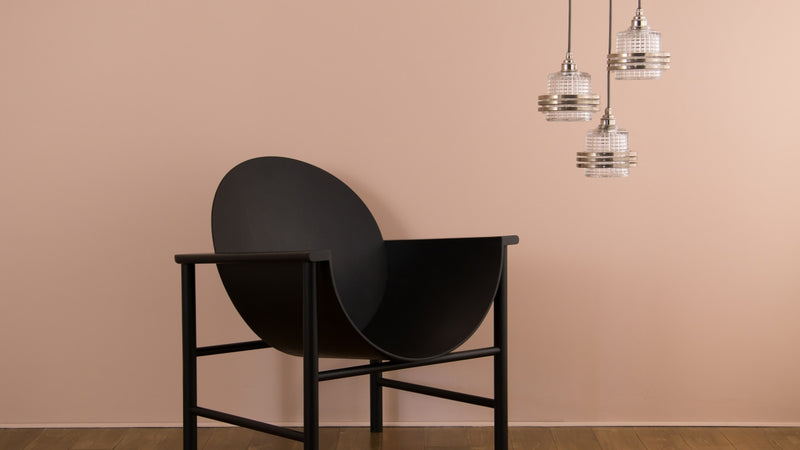
Lights lost in history: Tales from the Eastern Bloc
As our workshop team finish restoring our latest batch of salvaged industrial lights, we take a special look at some intriguing pieces from the Eastern Bloc...
Standing as small monuments to a compelling point in modern history, it goes without saying that the lights we salvage from the former Eastern Bloc are saturated with their own unique tales. At skinflint we reclaim and restore these unique artefacts that otherwise would have been lost to landfill - a responsibility we don’t take lightly.
With nearly 15 years of experience sourcing and restoring lights from the 1920s-1970s, these well-engineered pieces receive the care and attention they deserve. Whether from the U.S. or the Eastern Bloc, a huge number of the lights we find bear traces of the Cold War, a time when technology was forced to rapidly advance as two sides of the world engaged in tense competition.
After occupied Europe was liberated from the Nazi’s at the end of WWII, it was divided amongst the Western allies and the Soviet Union in a tense exchange that would define the political landscape of the 20th century. The Eastern Bloc was officially formed in 1955 when the communist ruled states of East Germany (GDR), Poland, Hungary, Bulgaria, Czechoslovakia, Albania and Romania signed the Warsaw Pact. This solidified them in an alliance against the West, whilst tying them politically and economically to the Soviet Union.

Image: Berlin residents crowd around the newly erected Berlin Wall in 1961 that separated West Germany from East Germany. Paul Schutzer / The LIFE Picture Collection
In a takeover that spanned twenty years, industry in the Eastern Bloc became state-run. Everything mass-produced was government controlled, from electric hand-mixers to the lights that adorned hotel lobbies and factory floors. This mass nationalisation led to many pre-war companies being swallowed up and taken over, never to be seen again.
However, with the wide-spread collapse of European communism in 1989-90 came the mass desertion of state-owned property - creating a landscape that is, to this day, full of abandoned buildings that stand as desolate symbols of a complicated era.
Ensuring the preservation of history is one of skinflint’s core principles, but it can be a tricky task to discern how and where these lights were made. We don’t have the luxury of accessing our archival library of lighting catalogues where the Eastern Bloc is concerned- this kind of printed communication either never existed or has since been destroyed. What we do have, however, are hints found on the intricate details of some of these Eastern Bloc lights.
Looking closely at our Salvaged Eastern Bloc lighting, an ‘AKA Electrics’ logo is visible. Many factories across the Eastern Bloc were run under this GDR state-owned umbrella company. Advertisements existed only for their range of approved household electricals - with the tagline ‘in every house at home’ - and these kernels of information are often the only source of information we have to place these lights.

Above: Our Eastern Bloc LED Lights at the 1960 Leipzig Industrial Fair ( Credit: House of History Wittenberg), and below, restored and ready for their next chapter some 60 years later, now as feature suspended pendants.
 Above: The VEB Witteberg factory floor after state take over, our 1950s Eastern Bloc Machinist Wall Lights seen in action illuminating the right-hand side workbench (Credit: House of History Wittenberg), and below, as they are today expertly restored by our team.
Above: The VEB Witteberg factory floor after state take over, our 1950s Eastern Bloc Machinist Wall Lights seen in action illuminating the right-hand side workbench (Credit: House of History Wittenberg), and below, as they are today expertly restored by our team.

When researching our latest Salvage Story, covering the range of Eastern Bloc lighting we’ve restored, the name ‘Paul Mrosek K.G. Wittenberg’ stood out. Found on our Eastern Bloc LED lights the name took us on an elusive journey of discovery into this manufacturer, who we could eventually trace with help from the House of History Wittenberg museum image archives and through the lights in our workshop.
The earliest mention of Paul Mrosek is a ‘manufacturer of electrical and small machines’ seen in a photograph from 1948. Skip to 1960, a banner above an exhibition stand full of linear lights displays: ‘P. Mrosek K.G. Wittenberg’, with ‘K.G’ indicating the factory was under partial state ownership. At an unknown point during the sixties, the mark on variations of the same model of light shows ‘VEB Leuchtenbau Wittenberg’ VEB (Volkseigener Betrieb) meaning ‘Publically Owned Enterprise’ and by the 1970s the factory was fully state-owned with the name P. Mrosek omitted. There is no record of the company after the reunification and the privatisation of German industry in the 1990s, one of the few records left of this company are the lights that we lovingly refurbish.
Our warehouse is full of these small, but intriguing stories. Some that we will never have all of the pieces to, but we pride ourselves on being part of this puzzle. The utmost care and attention is made into preserving any signs of a light's past life. From manufacturers' marks to wear and tear, we salvage pieces that could potentially have been lost in history, giving them new lives in homes and striking interiors across the world.

Image: skinflint Eastern Bloc Industrial LED lighting in Verdant Taproom, Penryn.
You might also like
FAQs about our operations during Covid-19
We remain fully operational during Covid-19. Here is a list of frequently asked questions relating to dispatch and our operations during this period.
NewsCzech Bohemian glass: Tracing the origins of a collector’s piece
Salvaging our vintage 1960s Bohemian glass chandeliers and pendant lights sets our lighting experts on a journey to discover more about the illustrious movement.
Lighting HistoryLighting up London’s entertainment industry
Theatre legend and iconic entertainment landmarks - a trip into our lighting archive reveals the fascinating heritage behind our vintage theatre lighting collection.
Architecture| Lighting History








